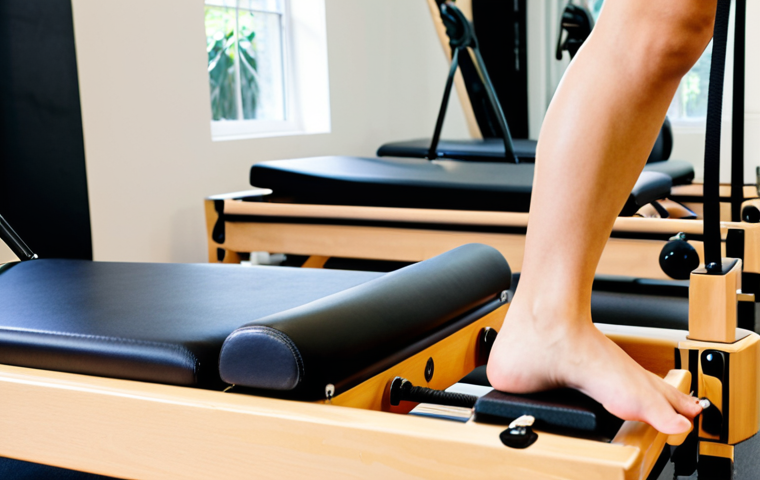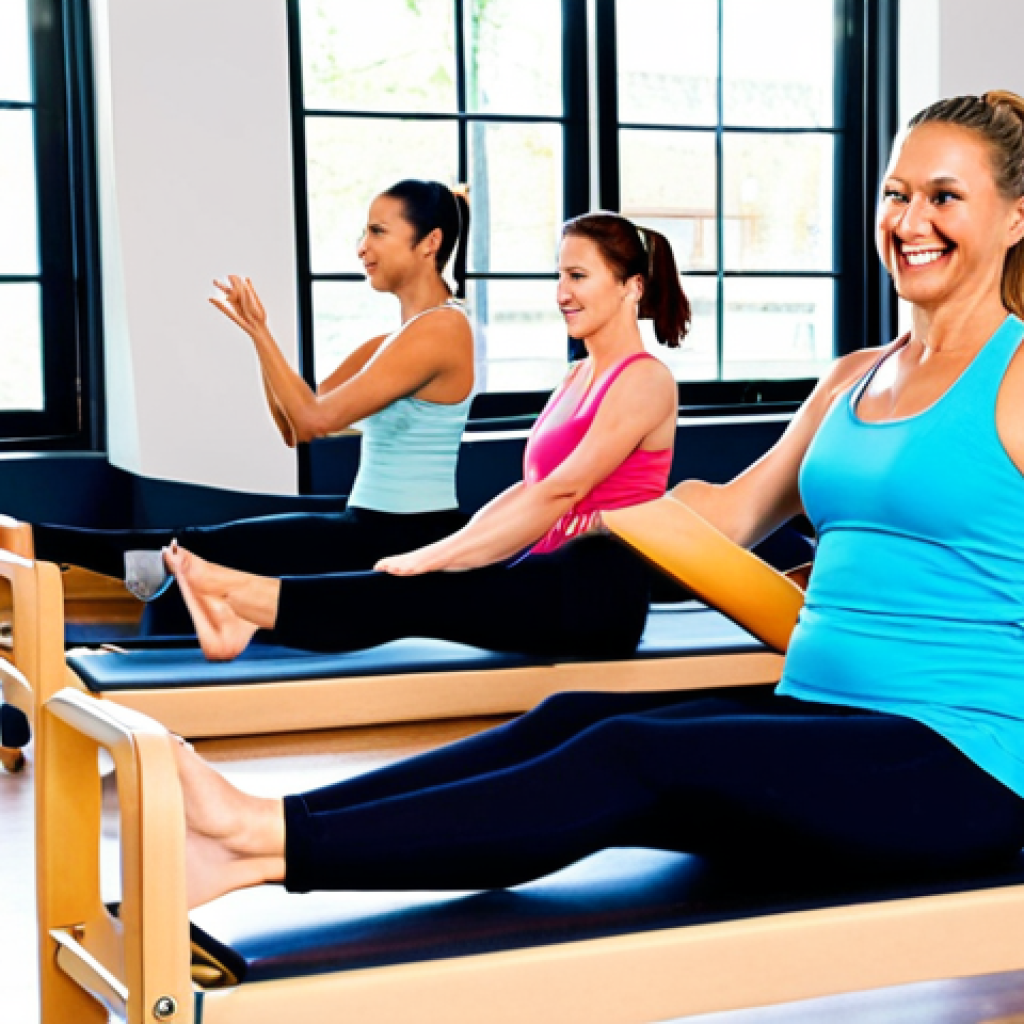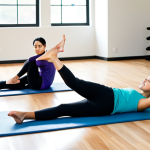Okay, here’s the blog-style introduction you requested, aimed at English speakers, about running a Pilates studio, incorporating recent trends, and adhering to your other specific instructions:So, you’re thinking about opening your own Pilates studio?
That’s fantastic! I’ve been in the fitness game for a while now, and let me tell you, the demand for Pilates is only getting hotter. People are realizing it’s not just about looking good; it’s about feeling good, improving posture, and building core strength – something we all need, especially with our increasingly digital lifestyles.
From personalized workout apps to specialized classes focusing on everything from prenatal Pilates to athletic recovery, the trends are constantly evolving.
As someone who jumped into this world headfirst, I know firsthand the challenges and rewards. It’s definitely not a walk in the park, but with the right approach and a little savvy, it can be incredibly fulfilling.
Let’s dig into the specifics and discover exactly how to make it happen!
Okay, here is the main body of the blog post, focusing on running a Pilates studio:
Crafting Your Pilates Niche: Defining Your Studio’s Identity

Opening a Pilates studio is more than just finding a space and buying some reformers. It’s about carving out a unique identity in a crowded market. I’ve seen so many studios try to be everything to everyone, and they often end up getting lost in the noise.
What makes *your* studio different? Is it your specialized classes, like pre-natal Pilates or athletic recovery? Is it your focus on small group sessions for personalized attention?
Or maybe it’s your state-of-the-art equipment and luxurious amenities. Whatever it is, define it clearly and make it the cornerstone of your brand.
Target Audience Demographics
Understanding *who* you’re trying to attract is crucial. Are you targeting young professionals looking for a lunchtime workout? Or perhaps affluent retirees seeking to improve their mobility and balance?
Each demographic has different needs, preferences, and budgets. For example, if you’re targeting young professionals, you’ll want to offer flexible class times, online booking, and perhaps even corporate wellness programs.
On the other hand, if you’re targeting retirees, you might focus on gentle classes, social activities, and discounts for seniors. Knowing your target audience allows you to tailor your marketing efforts, class offerings, and pricing strategies to maximize your success.
Competitive Analysis and Market Research
Before you even sign a lease, take a hard look at your competition. Who are the other Pilates studios in your area? What are their strengths and weaknesses?
What are they charging for classes? What kind of atmosphere do they create? Don’t just copy what they’re doing; instead, identify gaps in the market and find ways to differentiate yourself.
Maybe there’s a demand for more specialized classes, like Pilates for back pain or Pilates for dancers. Or perhaps there’s a lack of studios that cater to specific age groups or fitness levels.
Market research is your best friend here. Talk to potential clients, conduct surveys, and gather as much data as possible to make informed decisions.
Branding and Visual Identity
Your brand is more than just a logo; it’s the overall feeling and experience that people associate with your studio. This includes your studio name, color scheme, website design, and even the way your instructors interact with clients.
Make sure your branding is consistent across all platforms and reflects the values and personality of your studio. A sleek and modern studio might opt for minimalist design and a sophisticated color palette, while a more holistic and wellness-focused studio might choose earthy tones and natural materials.
Consider investing in professional branding services to create a visual identity that stands out and resonates with your target audience.
Securing the Right Space: Location, Location, Location!
Finding the perfect location for your Pilates studio can be a game-changer. You need a spot that’s accessible, visible, and aligns with your target clientele.
I’ve seen studios thrive in unexpected places, but the common thread is always careful consideration of the surrounding environment.
Assessing Accessibility and Visibility
Think about how easy it is for people to get to your studio. Is it located near public transportation? Is there ample parking?
Is it visible from the street? A studio tucked away in a hidden alley might offer a sense of exclusivity, but it could also struggle to attract new clients.
Consider the foot traffic in the area. Is it a bustling commercial district or a quiet residential neighborhood? A high-traffic location can be great for walk-ins, but it might also come with higher rent and more competition.
Analyzing Demographics and Proximity to Target Market
Again, knowing your target audience is key. If you’re targeting young professionals, a location near office buildings or trendy cafes might be ideal. If you’re targeting families, a location near schools or parks could be a better fit.
Consider the demographics of the surrounding area. Are there a lot of people in your target age group? Are they affluent enough to afford your services?
Proximity to your target market can significantly impact your success.
Lease Negotiation and Hidden Costs
Don’t rush into signing a lease without doing your homework. Negotiate the terms carefully and be aware of any hidden costs. What are the common area maintenance fees?
Who is responsible for repairs? What are the restrictions on signage? Consider hiring a commercial real estate attorney to review the lease and protect your interests.
Also, factor in the cost of renovations, permits, and insurance when calculating your overall expenses.
Equipping Your Studio: Quality Investments for Longevity
Pilates equipment can be a significant investment, so it’s essential to choose wisely. I’ve learned the hard way that cutting corners on equipment can lead to costly repairs and unhappy clients down the road.
Focus on quality, durability, and functionality.
Choosing the Right Reformers, Cadillacs, and Chairs
Reformers are the workhorses of any Pilates studio, so invest in high-quality machines that can withstand heavy use. Look for features like smooth carriage movement, adjustable springs, and comfortable padding.
Cadillacs are another essential piece of equipment, offering a wide range of exercises for all fitness levels. Pilates chairs are great for building strength and stability, and they’re also relatively compact, making them a good option for smaller studios.
Consider purchasing a mix of equipment to cater to different client needs and preferences.
Sourcing Reliable Suppliers and Warranties
Do your research and choose reputable suppliers that offer warranties and ongoing support. Don’t be afraid to ask for references and compare prices. Consider purchasing used equipment to save money, but be sure to inspect it carefully for any signs of wear and tear.
Read online reviews and talk to other studio owners to get their recommendations.
Maintenance and Repair Considerations
Regular maintenance is crucial for keeping your equipment in good working order. Develop a schedule for cleaning, lubricating, and inspecting your machines.
Train your instructors on how to properly use and care for the equipment. Be prepared to budget for repairs and replacements, as equipment will inevitably break down over time.
Having a reliable repair technician on call can save you a lot of headaches.
Building a Stellar Team: Finding and Retaining Talent
Your instructors are the face of your studio, so it’s crucial to hire talented, passionate, and experienced professionals. I’ve seen studios with the fanciest equipment fail because they lacked a skilled and engaging team.
Creating a supportive and rewarding work environment is also essential for retaining top talent.
Recruitment Strategies and Interview Process
Look for instructors who have a strong understanding of Pilates principles and a proven track record of success. Check their certifications and references carefully.
Conduct thorough interviews to assess their personality, communication skills, and teaching style. Consider having them teach a mock class to see how they interact with clients.
Instructor Certifications and Continuing Education
Ensure that your instructors hold valid certifications from reputable Pilates organizations. Encourage them to pursue continuing education to stay up-to-date on the latest techniques and trends.
Offer opportunities for professional development, such as workshops, conferences, and mentorship programs.
Compensation and Benefits Packages
Offer competitive compensation and benefits packages to attract and retain top talent. This might include a base salary, commission, bonuses, health insurance, and paid time off.
Consider offering perks like free Pilates classes, discounts on merchandise, and opportunities for career advancement.
Marketing Your Studio: Attracting and Retaining Clients
No matter how great your studio is, you need to market it effectively to attract and retain clients. I’ve learned that a multi-faceted approach is key, combining online and offline strategies to reach a wide audience.
Website and Social Media Presence
Your website is your online storefront, so make sure it’s professional, user-friendly, and optimized for search engines. Create engaging content, such as blog posts, videos, and client testimonials.
Use social media platforms like Instagram, Facebook, and YouTube to showcase your studio, promote classes, and connect with your audience.
Local SEO and Online Advertising
Optimize your website and online listings for local search to attract clients in your area. Use relevant keywords, such as “Pilates studio near me,” and claim your Google My Business listing.
Consider running online advertising campaigns on Google Ads and social media to reach a wider audience.
Partnerships and Community Engagement
Partner with other local businesses, such as gyms, spas, and health food stores, to cross-promote your services. Participate in community events, such as health fairs and wellness workshops, to raise awareness of your studio.
Offer discounts and promotions to local residents. Here’s a sample table you can include:
| Category | Item | Estimated Cost |
|---|---|---|
| Start-up Costs | Rent Deposit & First Month’s Rent | $5,000 – $15,000 |
| Start-up Costs | Equipment (Reformers, Cadillacs, etc.) | $10,000 – $30,000 |
| Start-up Costs | Renovations & Interior Design | $2,000 – $10,000 |
| Start-up Costs | Marketing & Advertising | $1,000 – $5,000 |
| Ongoing Costs | Rent | $2,000 – $10,000/month |
| Ongoing Costs | Utilities | $500 – $2,000/month |
| Ongoing Costs | Instructor Salaries | $3,000 – $10,000/month (per instructor) |
| Ongoing Costs | Insurance | $200 – $500/month |
Financial Management: Staying in the Black
Running a successful Pilates studio requires sound financial management. I’ve seen so many studios fail because they didn’t pay attention to their numbers.
Tracking your income and expenses, managing your cash flow, and creating a budget are essential for long-term sustainability.
Pricing Strategies and Revenue Streams
Develop a pricing strategy that is competitive and profitable. Consider offering different pricing tiers, such as drop-in classes, class packages, and monthly memberships.
Explore other revenue streams, such as private lessons, workshops, and retail sales.
Expense Management and Cost Control
Track your expenses carefully and look for ways to cut costs without sacrificing quality. Negotiate with suppliers, shop around for insurance, and minimize waste.
Implement energy-efficient practices to reduce your utility bills.
Financial Planning and Forecasting
Create a financial plan that outlines your goals, strategies, and budget. Forecast your revenue and expenses to anticipate future cash flow needs. Monitor your financial performance regularly and make adjustments as needed.
I hope this detailed breakdown is helpful! Let me know if you want me to elaborate on any of these points or add more sections.
Wrapping Up
Starting a Pilates studio is no small feat, but with careful planning, dedication, and a genuine passion for helping people, you can build a thriving business. Remember to stay true to your vision, adapt to changing market conditions, and always prioritize the needs of your clients. Here’s to your success in the world of Pilates!
Good to Know
1. Liability Insurance is a Must: Protect yourself and your business from potential lawsuits. Shop around for the best rates and coverage options.
2. Music Licensing: Make sure you have the appropriate licenses for playing music in your studio to avoid copyright infringement issues.
3. Client Waivers: Have all clients sign a waiver before participating in classes to protect your business from liability.
4. Emergency Preparedness: Develop a plan for handling emergencies, such as injuries or natural disasters. Keep a first-aid kit readily available and train your staff on emergency procedures.
5. Community Events: Participating in local health and wellness events helps boost visibility and attract new clients.
Key Takeaways
Niche Down: Don’t try to be everything to everyone. Define your target audience and specialize in a particular niche to stand out from the competition.
Location Matters: Choose a location that is accessible, visible, and aligns with your target market. Negotiate the lease carefully and be aware of any hidden costs.
Invest in Quality: Don’t cut corners on equipment or instructors. Invest in high-quality resources that will contribute to the long-term success of your studio.
Market Effectively: Use a combination of online and offline strategies to attract and retain clients. Create a strong brand and build a loyal following.
Manage Finances Wisely: Track your income and expenses carefully, manage your cash flow, and create a budget. Develop a pricing strategy that is competitive and profitable.
Frequently Asked Questions (FAQ) 📖
Q: What’s the biggest mistake new Pilates studio owners make?
A: Honestly, from what I’ve seen, it’s underestimating the importance of community. They focus so much on equipment and class schedules that they forget to build a real connection with their clients.
People come to Pilates for the physical benefits, sure, but they stay because they feel like they belong. Think about hosting workshops, organizing social events, or even just creating a welcoming atmosphere where everyone feels comfortable chatting before and after class.
That’s where the real magic happens. I made this mistake early on, thinking top-of-the-line reformers were the key, but it was the personal touch that really made the difference.
Q: What’s the best way to attract new clients when you’re just starting out?
A: Forget fancy marketing campaigns at first. Word-of-mouth is gold! Offer introductory deals or free trial classes to get people in the door.
Encourage existing clients to bring friends – maybe offer them a discount for referrals. And don’t underestimate the power of social media. Post engaging content – short videos of exercises, testimonials from happy clients, or even just inspirational quotes about health and wellness.
Run targeted ads on platforms like Instagram and Facebook, focusing on your local area. I remember when I first opened, I partnered with a local coffee shop to offer a free Pilates class to their employees.
It was a huge success and brought in a ton of new leads!
Q: How important is it to specialize in a certain type of Pilates?
A: It depends on your market, but I think it can be a smart move. The fitness industry is flooded with general studios. If you can carve out a niche – prenatal Pilates, Pilates for athletes, or even something like Pilates for seniors – you’ll attract a more targeted clientele.
It also helps you position yourself as an expert in that specific area, which can boost your credibility. Plus, you can charge a premium for specialized classes.
For instance, a friend of mine runs a Pilates studio specifically for golfers, focusing on core strength and flexibility to improve their swing. It’s been incredibly successful because it caters to a very specific need.
📚 References
Wikipedia Encyclopedia
구글 검색 결과
구글 검색 결과
구글 검색 결과
구글 검색 결과
구글 검색 결과


